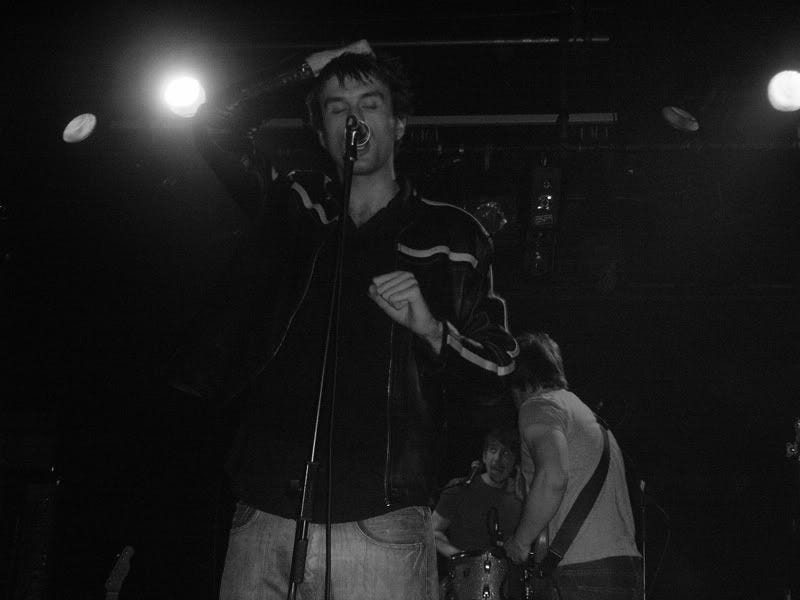Local Bands Stick Together
When Oasis named Richard Ashcroft as their main support act for the UK legs of their world tour, it got me thinking. About how local bands stick together and continue to support each other.
Several reasons and decisions go behind forming the bill for a gig. The opening warmup slot could be reserved for a local band finding their way. Main support acts tend to be known by the headliners, sometimes they’ll be on the same record label. Occasionally, the headlining act will be looking to give a leg-up to another local band. Almost as if they’re helping out the community.
Oasis and (The) Verve
The announcement of Richard Ashcroft opening for Oasis should not have come as a surprise. It’s not the first time that he’s shared a bill, or a stage, with the band. A short accompanying video was almost sepia-tinged, harking back to the early Nineties when both bands were on the rise. Yet it was Oasis who opened for The Verve in December 1993.

There’s a sense of sliding doors. Oasis were already on the ascendency yet seeing their local mates command the stage and a big audience would have served as inspiration. Liam Gallagher learnt from Ian Brown of The Stone Roses and you can liken his messianic stage presence to that of Ashcroft. Then there’s his songwriting, and Noel Gallagher has admitted that the song ‘Cast No Shadow’ is dedicated to Ashcroft. Watching from the sidelines, you can imagine a tinge of jealousy. A sense of, if they can do it, why can’t we.
That Ashcroft and the Gallaghers are from the North of England (Wigan is only 28 miles from Manchester) also helps. They’ve shared the same stage, trodden the same path to musical stardom and are kindred spirits. Not only are the Gallaghers familiar with Ashcroft, so are the crowd, which makes it a natural choice. Offstage, you can envisage that those shared experiences would be a comfort.
Arctic Monkeys and Milburn
Anyone familiar with the story of Arctic Monkeys, should be aware of Milburn’s role. Joe Carnall told me of how he would spot Alex Turner in the front row of his gigs. He was arguably taking notes and there’s the same sense of, if they can do it, why can’t we. Turner could take hints of a feasible musical style to follow too. To this day, Milburn’s drummer, Joe Green, is on hand to teach Matt Helders new styles to follow should Arctic Monkeys shift musical direction.
Both bands grew up in Northern Sheffield and shared social circles. Their local mates tend to know each other from frequenting the same practice rooms, gigs, and pubs. While such familiarity could have bred contempt, it was only ever a healthy rivalry between the two bands.
During the research of my manuscript, I’d often spend afternoons in Sheffield library going through microfilm of The Sheffield Star. I’d take photos and notes of the weekly gig section to create a database that I could report from. Chris Wilson from Sheffield Boardwalk agreed with me that there was a period when local hopes were pinned on Milburn, rather than Arctic Monkeys. They had the songs, the tight live show and were attracting bigger audiences. Through looking at the gig line-ups from 2003 to 2005, you can almost sense a point in time when Arctic Monkeys advanced past Milburn. When it was Milburn supporting Arctic Monkeys.
That could have been heartbreaking for Joe Carnall and the band, yet he knows his role in the overall narrative. Without Milburn breaking through and headlining established venues, perhaps Arctic Monkeys would not have existed. It seems that their illustrious neighbours recognised this too. Milburn were often invited on tour with Arctic Monkeys, almost as if the band’s management saw the value in having some local mates along for the ride.
Sheffield’s New Yorkshire Wave At The Leadmill
Another anecdote that came out of the many interviews I did came from Bromheads Jacket’s drummer. Before the band reformed, Jono West told me of how he had always wanted to go on tour with local bands. It had happened before. New Yorkshire was born when The Cribs, The Blueskins and 10,000 Things represented West Yorkshire across the country. Though Milburn often supported Arctic Monkeys, it rarely went further on the line-up. Aside from The Long Blondes’ short support slot (they left the stage to shouts of ‘Puffs! Puffs! Puffs’ from the crowd), it was rare to see any other local band support them so readily.

One occasion sticks out. The night when Arctic Monkeys secured their second number one single, hours before they were to drop their debut album. Reading the line-up today, the gig was a celebration of the years building up to that point. Jon McClure was fronting his newest band, Reverend and The Makers, and was given the biggest leg-up with the main support slot. Harrisons were first on the bill and then it was Milburn, of course. Backstage must have been some party.
That night was the culmination of the graft that went before it. The gigs to half-empty rooms, the hours spent in practice rooms working on new songs. By 2006, local hopes were high. It was expected that Arctic Monkeys would break through yet you could say the same for the other three bands on the line-up. That they’d all stuck together on the journey up meant that it mattered more too.



